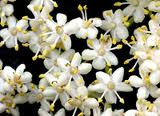There are different types of vervain that grow around the world. Verbena officinalis is indigenous to the British Isles and Europe, while Blue vervain also known as Traveller’s Joy and Wild Hyssop, or Verbena hastate is native to the US. Vervain also grows in the Caribbean, two species being Burry vervain and Verbena jamaicensis. Verbena officinalis is the herb under discussion here.
Vervain or Verbena officinalis is also known by the following names, Herb of Grace, Herba Sacra, Herba Veneris, and devil’s bane, formerly as it was believed that it would banish evil spirits. It was held sacred to the goddesses Diana and Venus by the Romans and could be burned like incense in temples and was used in them and in homes to make the air sweeter and more hygienic. The Egyptians dedicated vervain to their goddess Isis. It was given the name the venal herb because it has aphrodisiac qualities and stimulates the libido. It is known as Herba Sacra because of the use made of it by the Romans in sacred rituals. It was believed in Mediaeval times that it had flourished on Mount Calvary where Christ was crucified and had helped to staunch the blood from his wounds as he hung on the cross.
In Britain it was used by the Druids to connect them to the spirit world, and was used as a healing herb and almost had has much influence for them as mistletoe. The word vervain comes from the Celtic words, fer meaning to drive away and faen a stone. An amulet of the bruised herb was worn around the neck to protect from venomous bites and evil as well as just for good luck. It was passed over the Beltane fires and used to protect animals in the winter. At Midsummer it was strewn in fields to ensure the soil was fertile so that the crops would grow. It is said that it is best to gather the herb at Midsummer and dry it immediately for later use.
 The Druids on the other hand, believed that it was at its most effective when gathered during the waning period of the moon when Sirius the Dog Star was rising. They used it in and infusion and sprinkled their homes with the water to banish any evil lurking in them. In the old language of flowers, vervain symbolized enchantment and was used in love potions and to protect from the witches who made the potions.
The Druids on the other hand, believed that it was at its most effective when gathered during the waning period of the moon when Sirius the Dog Star was rising. They used it in and infusion and sprinkled their homes with the water to banish any evil lurking in them. In the old language of flowers, vervain symbolized enchantment and was used in love potions and to protect from the witches who made the potions. The Romans and Greeks used it for diarrhoea, and as it contains tannin it was probably effective, and would chew the root to strengthen the teeth and gums. The infusion of the herb actually makes a good mouth wash for ulcers and gingivitis.
It has also been used for nervous disorders and is still used by herbalists for soothing nervous disorders, such as anxiety and stress and to promote relaxation and sleep. It has sedative properties, as well as astringent ones, and can be used as a diuretic, or to promote sweating in cases of fever. It has been used as an antispasmodic for stomach cramps and is used for symptoms of PMT (PMS) and the menopause. It is also used for promoting good eyesight and poultice made with a tincture of vervain have been used for headaches, rheumatism and neuralgia among other ailments. It leaves the skin a slightly red colour when used in this way and people thought that it brought the blood to the surface of the skin.
For a decoction you need 2 ounces of the dried herb or 4 of fresh to 2 pints of water and boil until the liquid has reduced by half. This can be used for piles and as a purgative. It can also be used for skin irritations. The tisane is good to stave off colds and flu, and it is a healthy drink as it contains bioflavonoids such as quercetin and kaempferol etc.
Modern medical research has shown that it can inhibit the Hepatitis B virus, which agrees with one of the ancient usages of this herb as a liver tonic. It is also effective as a calming nerve tonic and helps as much as St John’sjohn's Wort does in soothing stress and anxiety. It is an antidepressant which is as useful as rosemary, lavender, mugwort and St. John’s Wort.
It enhances lactation in breast feeding mothers and helps in childbirth as it induces contraction of the uterine muscles, making childbirth easier. It should not be used during pregnancy for this reason.
Vervain can also be used as a diuretic, and sachets of the dried herb can be kept in clothes to make them smell good and to repel insects. You can put it in your bath to help you relax and to help get rid of any skin problems.
The tisane will help pep up a jaded appetite and promotes digestion. It can also be used to dress wounds and sores. Mostly it is used to calm the nerves and has a reputation for being an aphrodisiac, presumably because of the actions of the bioflavonoids and its sedative properties which will lower inhibitions.
VERVAIN TISANE
Ingredients
1 tbsp dried herb or 2 tbsp chopped fresh herb, flowers and leaves.
1 cup boiling water
Method
Pour the boiling water over the herb and leave to steep for 15 mins. Strain and drink.
Three cups a day can be taken but remember that it is a diuretic.
This has Taste and is a Treat(ment).


















